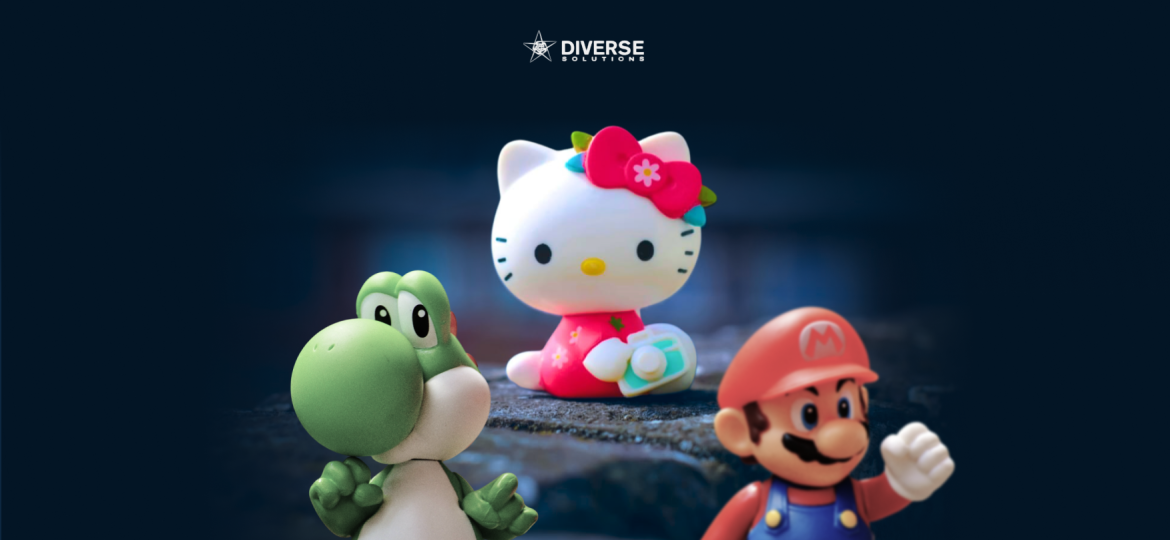
From pastel mascots to smiling packaging, Kawaii Marketing—the art of leveraging cuteness in branding—has evolved into a global business strategy that drives emotional engagement and customer loyalty. Originating from Japan, “kawaii” (which means “cute” or “adorable”) has transcended culture and industry, shaping how brands communicate warmth, playfulness, and positivity.
In today’s experience-driven market, where emotional connection is everything, kawaii has proven that being cute can also be incredibly powerful.
What Is Kawaii Marketing?
Kawaii Marketing refers to the strategic use of cute designs, characters, colors, and emotions in branding to evoke affection and trust. The kawaii aesthetic—marked by round shapes, soft colors, and friendly expressions—creates an instant sense of comfort and approachability.
It’s not limited to toys or fashion. From technology to banking, many industries are using kawaii elements to humanize their brands. For example, LINE’s Brown and Cony characters and Sanrio’s Hello Kitty have become cultural icons, representing joy, innocence, and community.
The Psychology Behind Kawaii Appeal
The Science of “Aww”
Research from Hiroshima University (Nittono et al., 2012) found that exposure to cute images enhances focus and motivation. This “baby schema effect” triggers a nurturing response in the brain, increasing positive emotions and social bonding—core ingredients for brand loyalty.
Emotional Branding at Its Best
According to the Harvard Business Review, emotional engagement is a stronger predictor of brand loyalty than customer satisfaction. Kawaii design triggers happiness and comfort, forming deep emotional ties that make consumers more likely to repurchase and recommend.
Cuteness as a Social Language
Kawaii imagery transcends language barriers. Its simplicity and friendliness make it universally understandable, especially in digital communication. This is why emojis, mascots, and cute avatars dominate online platforms—they humanize digital interactions and foster emotional connection.
How Global Brands Use Kawaii Marketing
Sanrio (Hello Kitty)
The pioneer of kawaii culture, Sanrio built a multi-billion-dollar empire on emotional attachment rather than storytelling. Hello Kitty’s blank expression allows people to project their own emotions, making her universally relatable.
LINE Friends & BT21
K-pop and tech merge perfectly in these character brands. LINE’s mascots and BTS’s BT21 characters have become pop-culture icons, expanding into merchandise, cafés, and even themed hotels.
McDonald’s Japan
Through limited-edition kawaii packaging and seasonal character collaborations, McDonald’s taps into cultural nostalgia and consumer excitement—boosting both brand image and sales.
Why Kawaii Works in Modern Marketing
In an increasingly digital and impersonal world, consumers crave authentic emotional experiences. Kawaii offers a sense of joy and safety amid chaos—a reminder of childlike wonder and simplicity.
A report from Deloitte Insights (2024) highlighted that emotionally expressive branding increases consumer engagement by up to 30%, particularly among younger generations who value relatability over prestige.
Kawaii also aligns with modern values of positivity, inclusivity, and sustainability, as brands use cute imagery to soften their messaging and promote kindness and empathy.
The Business of Cuteness
Beyond aesthetics, kawaii has become a global economic driver:
- The global kawaii merchandise market is valued at over US$20 billion (Statista, 2024).
- In Singapore and Southeast Asia, kawaii-themed retail spaces and cafés have surged in popularity, blending visual appeal with experience-driven design.
- Social media engagement for kawaii-themed posts consistently outperforms traditional advertising, according to HubSpot (2023).
These trends confirm that cuteness is not just a design choice—it’s a long-term brand strategy.
Implementing Kawaii Marketing Strategically
To use kawaii effectively:
- Stay authentic: Align cute aesthetics with your brand’s values.
- Design characters with meaning: Mascots should represent your brand’s personality.
- Use consistency: Repeat kawaii elements across packaging, online platforms, and events.
- Evoke joy, not childishness: Balance playfulness with sophistication to appeal to both kids and adults.
Conclusion
The Power of Kawaii Marketing lies in its ability to make people feel good. It blends emotional psychology, cultural storytelling, and design simplicity to create brands that people don’t just buy from—but emotionally connect with.
In an age where consumers choose emotion over function, kawaii proves that sometimes, a little cuteness can make a big difference.
For more information and to explore our offerings, visit Diverse Solutions Singapore.

